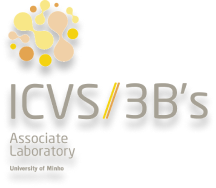
Pathogenesis and Development of Therapeutics for Neurodevelopmental Disorders
Our goal is to uncover mechanisms of disease and to test potential therapeutic approaches for disorders of human neurodevelopment, including intellectual disability (ID) and autism, but also early onset movement disorders and epilepsy, using adequate cellular and animal models of these disorders. We are currently focussing on the study of the abnormalities in neuronal circuitry underlying Rett syndrome and Down syndrome, two of the most common genetically defined forms of ID, and assessing the impact of candidate drugs on these abnormalities and on the behavioral manifestations. In addition, we are developing patient derived neuronal cell models and C. elegans models for the study of other neurodevelopmental diseases, for which we have contributed to identify the genetic cause.
Funding Agency
FCT
Project Reference
Project Members


Sara Duarte-Silva

Daniela Monteiro-Fernandes

Sara Ramalhosa Guerreiro

Rita Fernandes
Main Project Outcomes
S. Queirós, “Right ventricular segmentation in multi-view cardiac MRI using a unified U-net model”, in E. Puyol Antón et al. (eds) Statistical Atlases and Computational Models of the Heart. Multi-Disease, Multi-View, and Multi-Center Right Ventricular Segmentation in Cardiac MRI Challenge. STACOM 2021. Lecture Notes in Computer Science, vol 13131, pp. 287-295, Springer, Cham, 2022.
“Best Paper Award in the M&Ms-2 Challenge”, by M&Ms2 Challenge organizers and the Medical Image Computing and Computer Assisted Intervention (MICCAI) Society.
Main Project Outcomes
Baptista, M. S., Duarte, C. B., & Maciel, P. (2012). Role of the ubiquitin-proteasome system in nervous system function and disease: using C. elegans as a dissecting tool. Cellular and Molecular Life Sciences : CMLS, 69(16), 2691–2715. https://doi.org/10.1007/s00018-012-0946-0
Wen, J., Lopes, F., Soares, G., Farrell, S. A., Nelson, C., Qiao, Y., Martell, S., Badukke, C., Bessa, C., Ylstra, B., Lewis, S., Isoherranen, N., Maciel, P., & Rajcan-Separovic, E. (2013). Phenotypic and functional consequences of haploinsufficiency of genes from exocyst and retinoic acid pathway due to a recurrent microdeletion of 2p13.2. Orphanet Journal of Rare Diseases, 8, 100. https://doi.org/10.1186/1750-1172-8-100
Bessa, C., Maciel, P., & Rodrigues, A. J. (2013). Using C. elegans to decipher the cellular and molecular mechanisms underlying neurodevelopmental disorders. Molecular Neurobiology, 48(3), 465–489. https://doi.org/10.1007/s12035-013-8434-6
Da Silva, J. D., Oliveira, S., Pereira-Sousa, J., Teixeira-Castro, A., Costa, M. D., & Maciel, P. (2020). Loss of egli-1, the Caenorhabditis elegans Orthologue of a Downstream Target of SMN, Leads to Abnormalities in Sensorimotor Integration. Molecular Neurobiology, 57(3), 1553–1569. https://doi.org/10.1007/s12035-019-01833-0
Santos, M., Silva-Fernandes, A., Oliveira, P., Sousa, N., & Maciel, P. (2007). Evidence for abnormal early development in a mouse model of Rett syndrome. Genes, brain, and behavior, 6(3), 277–286. https://doi.org/10.1111/j.1601-183X.2006.00258.x
Santos, M., Summavielle, T., Teixeira-Castro, A., Silva-Fernandes, A., Duarte-Silva, S., Marques, F., Martins, L., Dierssen, M., Oliveira, P., Sousa, N., & Maciel, P. (2010). Monoamine deficits in the brain of methyl-CpG binding protein 2 null mice suggest the involvement of the cerebral cortex in early stages of Rett syndrome. Neuroscience, 170(2), 453–467. https://doi.org/10.1016/j.neuroscience.2010.07.010



Contact us
Phone: +351 253 604 967
Fax: +351 253 604 809
Email: icvs.sec@med.uminho.pt
Address
Life and Health Sciences
Research Institute (ICVS)
School of Medicine,
University of Minho,
Campus de Gualtar
4710-057 Braga
Portugal

Copyright ©2022 ICVS. All Rights Reserved



Copyright ©2022 ICVS. All Rights Reserved
Address
Life and Health Sciences
Research Institute (ICVS)
School of Medicine,
University of Minho,
Campus de Gualtar
4710-057 Braga
Portugal



Copyright ©2022 ICVS. All Rights Reserved
Address
Life and Health Sciences
Research Institute (ICVS)
School of Medicine,
University of Minho,
Campus de Gualtar
4710-057 Braga
Portugal

